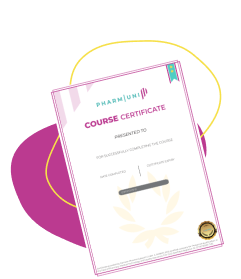QMS Compliance
Definition
QMS Compliance refers to the adherence of a Quality Management System (QMS) to applicable regulatory standards, guidelines, and best practices within the pharmaceutical, biotechnology, and life sciences industries. This includes compliance with Good Manufacturing Practices (GMP), GxP (Good Practice) principles, ISO standards (such as ISO 9001), and specific regulatory requirements from authorities like the FDA, EMA, and ICH.
Ensuring QMS compliance is critical for maintaining product quality, ensuring patient safety, and passing audits and inspections by regulatory bodies.
Detailed Explanation
Why QMS Compliance Matters
In the pharmaceutical and life sciences sectors, a robust and compliant QMS ensures that products are consistently manufactured and controlled to quality standards. Regulatory agencies require companies to implement a QMS that aligns with legal and industry expectations to ensure product safety and efficacy.
QMS compliance is not just about meeting minimum requirements; it is a proactive approach to quality assurance that includes continuous improvement, risk management, and documentation.
Key Elements of QMS Compliance
- Document Control: Ensuring all quality documents are current, approved, and accessible.
- Change Control: Managing changes to processes, equipment, or documents in a controlled manner.
- Training: Ensuring all personnel are trained and qualified for their roles.
- Deviation Management: Documenting and investigating deviations from standard procedures.
- Corrective and Preventive Actions (CAPA): Addressing root causes of non-conformances to prevent recurrence.
- Internal Audits: Regularly assessing the QMS to identify areas for improvement.
- Management Review: Senior management oversight to ensure the QMS remains effective and compliant.
QMS Compliance in Regulatory Context
Regulatory bodies such as the FDA, EMA, and ICH provide specific guidelines on how a QMS should be structured and maintained. For example:
- FDA 21 CFR Part 820: Quality system regulation for medical devices.
- ICH Q10: Pharmaceutical Quality System model applicable throughout the product lifecycle.
- EU GMP Annex 11: Guidelines for computerized systems in GMP environments.
Audit Compliance and Inspection Readiness
One of the primary goals of QMS compliance is to ensure readiness for regulatory audits and inspections. Audit compliance involves maintaining accurate records, demonstrating control over processes, and showing evidence of continuous quality improvement. Companies that fail to meet QMS requirements risk receiving warning letters, fines, or even product recalls.
Examples of QMS Compliance Activities
- Implementing an electronic Quality Management System (eQMS) to streamline documentation and workflows.
- Conducting regular supplier audits to ensure raw material quality.
- Utilizing risk-based approaches to prioritize quality improvements.
- Training staff on GxP principles and data integrity best practices.
Benefits of a Compliant QMS
- Improved product quality and consistency.
- Reduced risk of regulatory non-compliance.
- Enhanced customer and patient trust.
- Operational efficiencies and cost savings.



